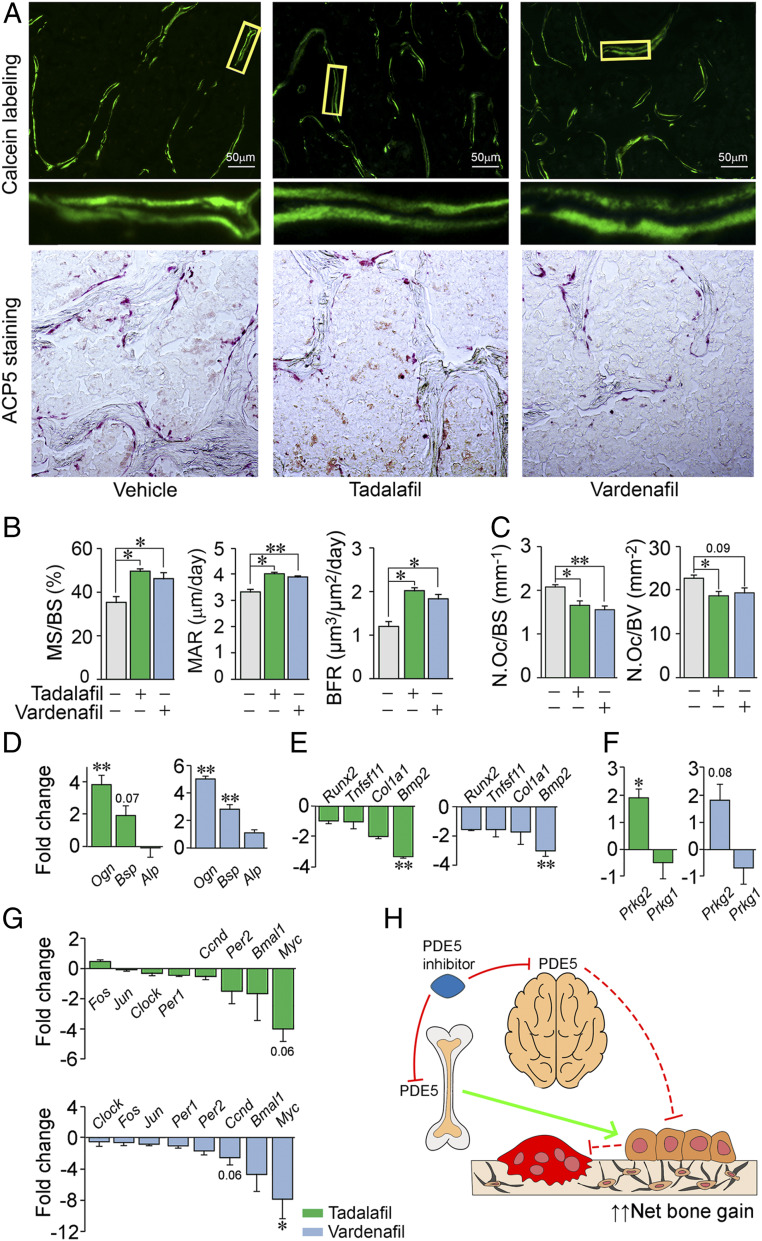Fig. 4.
PDE5A inhibitors tadalafil and vardenafil stimulate bone formation and reduce bone resorption. (A) Representative low-power photomicrographs (750-µm field) of calcein double labels with a magnified view (Bottom), as well as ACP5-stained surfaces in sections of vertebral trabecular bone at 6 wk following vehicle, tadalafil, or vardenafil treatment. (B and C) Histomorphometric analysis showing measured and calculated parameters of bone formation—MS, MAR, and BFR (5 to 24 sections from two or three mice) (B)—as well as number of osteoclasts (N.Oc) per bone surface (BS) or volume (BV) (9 to 20 sections from 3 to 5 mice) (C) (details and doses in Methods). Blinded measurements were made. Statistics: two-tailed Student’s t test; *P < 0.05, **P < 0.01, or as shown vs. vehicle. Osteoblastic gene signature (SYBR Green qPCR) consisting of a set of differentially regulated differentiation genes (Ogn, Bsp, Alp, Runx2, Tnfsf11, Col1a1, and Bmp2) (D and E), protein kinase G isoforms (Prkg1 and Prkg2) (F), and the unique sympathetic relay signature (39, 44) comprising Fos, Jun, Clock, Per1, Per2, Bmal1, Ccnd, and Myc (G), in differentiating osteoblast precursors from mice treated with tadalafil or vardenafil. (H) Schematic representation of the predicted roles of central and peripheral PDE5A inhibition and of reduced osteoclastic resorption in bone gain.

